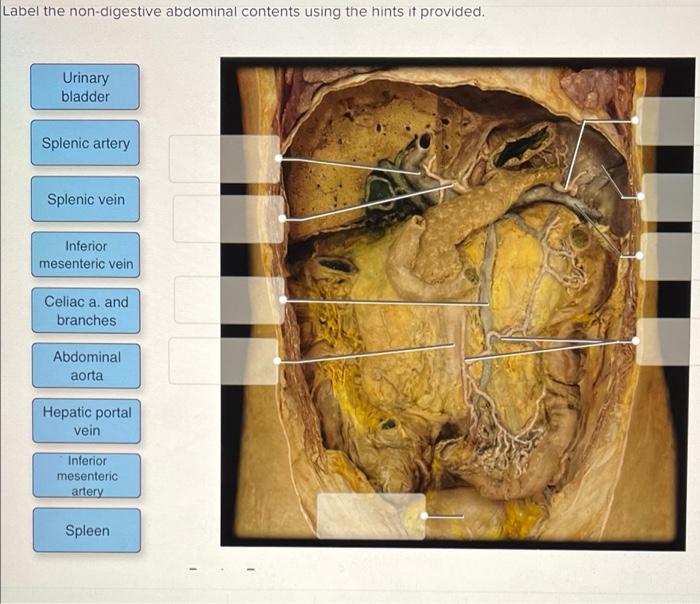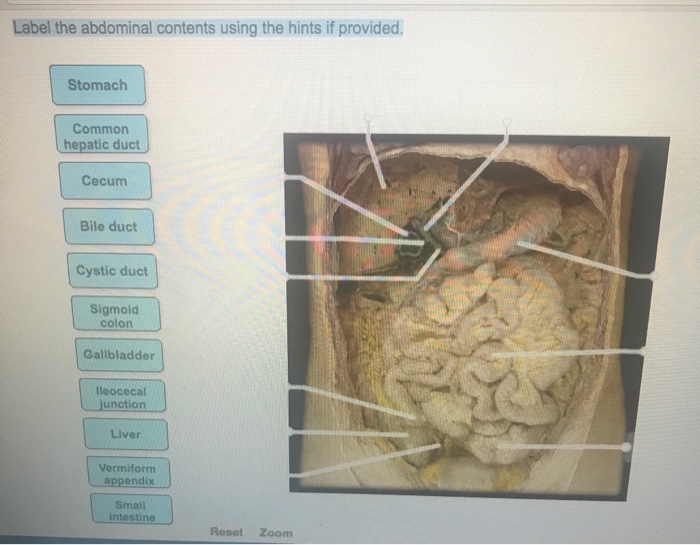Label the digestive abdominal contents using the hints if provided – Label the digestive abdominal contents using the hints provided sets the stage for this enthralling narrative, offering readers a glimpse into a story that is rich in detail and brimming with originality from the outset.
This comprehensive guide delves into the intricate workings of the digestive system, exploring the anatomy, functions, and potential disorders associated with this vital organ system.
Labeling the Digestive Abdominal Contents

The digestive system is a complex network of organs that work together to break down food and absorb nutrients. The abdominal cavity contains several key digestive organs, including the esophagus, stomach, small intestine, large intestine, liver, pancreas, and gallbladder.Each of these organs plays a specific role in the digestive process.
The esophagus transports food from the mouth to the stomach. The stomach secretes acids and enzymes that break down food into smaller molecules. The small intestine is responsible for absorbing nutrients from food. The large intestine absorbs water and electrolytes from food and eliminates waste products.
The liver produces bile, which helps to break down fats. The pancreas produces enzymes that help to break down carbohydrates, proteins, and fats. The gallbladder stores bile until it is needed for digestion.Understanding the anatomy and function of the digestive abdominal contents is essential for maintaining good digestive health.
Common Queries: Label The Digestive Abdominal Contents Using The Hints If Provided
What are the main structures of the digestive system?
The main structures of the digestive system include the esophagus, stomach, small intestine, large intestine, liver, pancreas, and gallbladder.
What is the function of the digestive system?
The digestive system is responsible for breaking down food into nutrients that can be absorbed and used by the body. It also eliminates waste products.
What are some common digestive disorders?
Common digestive disorders include gastroesophageal reflux disease (GERD), irritable bowel syndrome (IBS), and inflammatory bowel disease (IBD).


